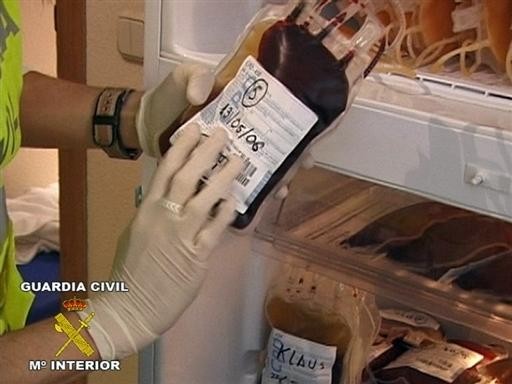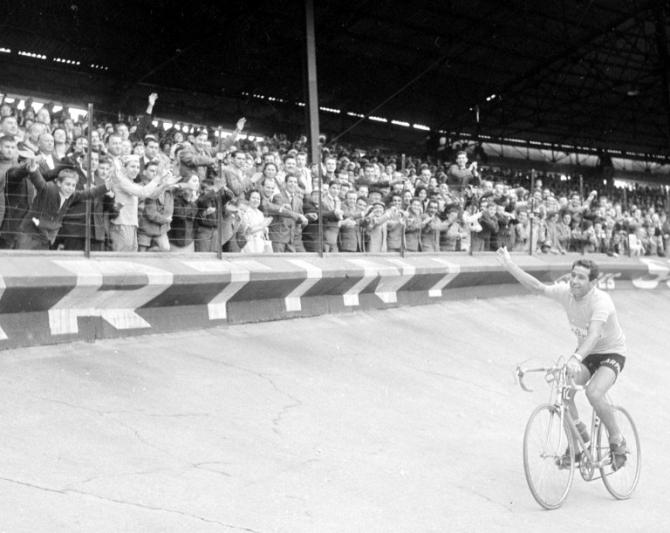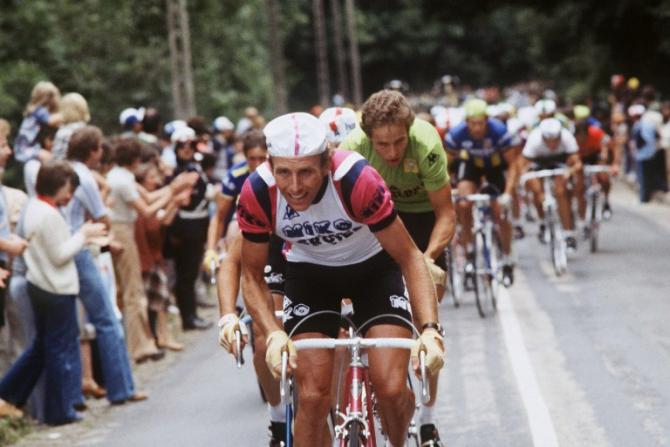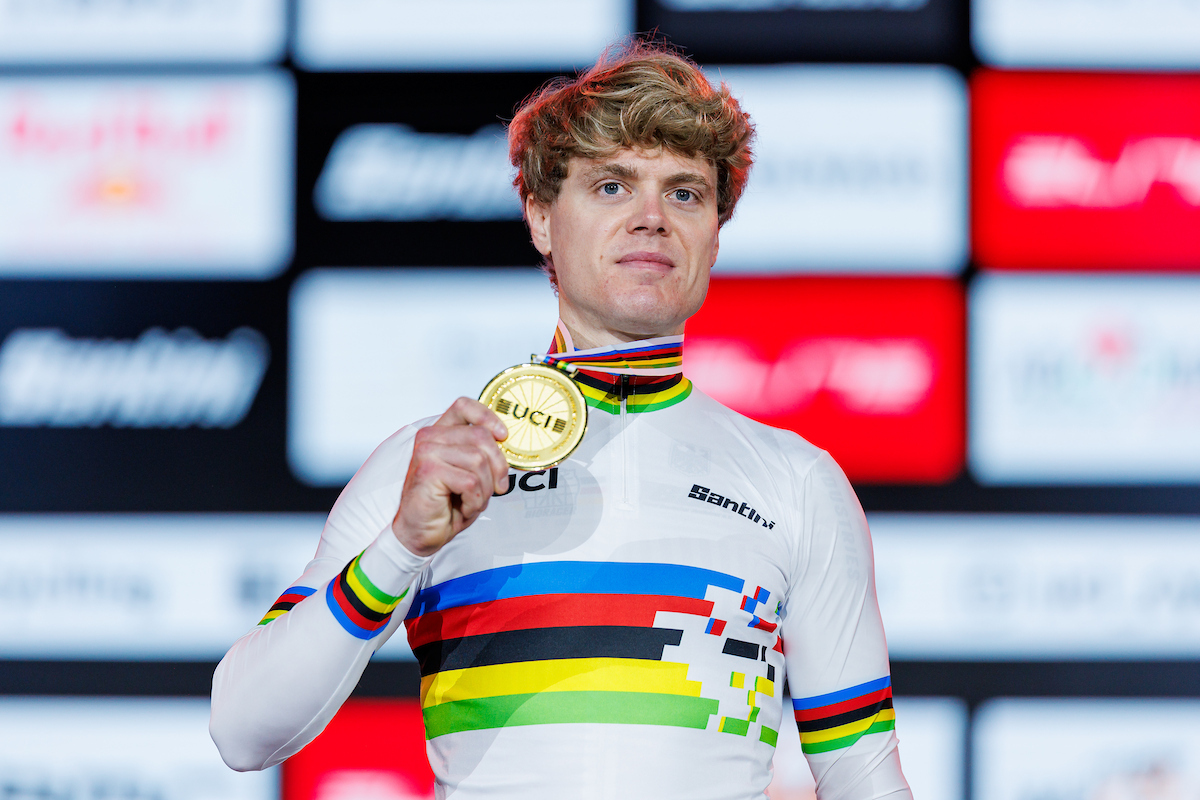A history on the use of blood transfusions in cycling
Part 1: The introduction of blood doping
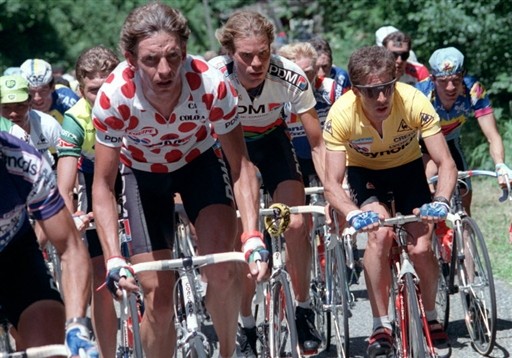
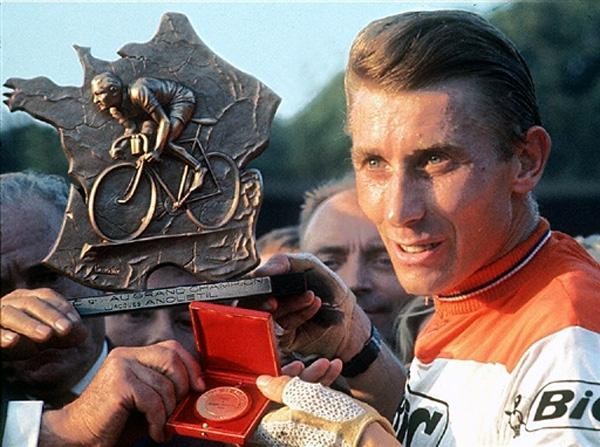
The recent revelations by the Dutch newspaper De Volksrant concerning the PDM team's doping regime at the 1988 Tour de France raise more questions than they answer, particularly with regard to the use of blood transfusions in 1980s cycling. Here we consider what is known about the use of transfusions in general and some of the questions these latest PDM revelations raise in relation to the history of blood doping in cycling.
Part I
What is known about the use of blood transfusions in sport, particularly in cycling? Most people will be able to tell you that the Finnish middle-distance runner Lasse Virén is said to have made use of transfusions when winning at the Munich and Montreal Olympics in 1972 and 1976. Most people will also be able to tell you that Francesco Moser broke Eddy Merckx's Hour Record in 1984 with the help of blood transfusions. And most people will be able to tell you about the US cycling squad at the Los Angeles Olympics later in 1984 and how they ended a seventy-two year medal drought, again with the aid of blood transfusions.
After that, the use of blood transfusions disappears from most people's knowledge until after the arrival in 2000 and 2001 of tests for EPO, at which point the clock is said to have been wound back and the accumulated knowledge of blood transfusions taken out of cold storage and applied to modern cycling. The revelations in the Operacion Puerto papers (2006 onwards), the Freiburg Report (2009) and the recent USADA report (2012) have all widened our knowledge of how blood transfusions were utilised in cycling in the early years of the new century. The years before, though, are still shrouded in darkness.
The first scientific studies to highlight the possible sporting benefits of transfusions appeared after the end of the Second World War. These studies were not aimed actually at sportsmen but came out of the military and were aimed at ways of combating hypoxia. In 1945, Pace et al published their first paper The Effect of Transfusions of Red Blood Cells on the Hypoxia Tolerance of Normal Men which was followed by another in 1947, The Increase in Hypoxia Tolerance of Normal Men Accompanying the Polycythemia Induced by Transfusion. In both studies Pace and his team were able to demonstrate a significant increase in endurance post-transfusion.
The next major study on the beneficial effects of transfusions came in 1960 when Gullbring et al published their paper The Effect of Blood Volume Variations on the Pulse Ratio in Supine and Upright Positions and During Exercise. This was based on the transfusion of 610ml blood one week after extraction. In 1966 Robinson et al published another paper, Circulatory Effects of Acute Expansion of Blood Volume based on a study transfusing 1,000ml of blood two weeks after extraction. Both Gullbring and Robinson's studies showed only marginal post-transfusion gains – two to three per cent – in endurance or VO2 max.
On the horizon, though, were the 1968 Mexico Olympics, and they were about to put fire to the fuse of many who would seek to emulate the effects of altitude artificially. The breakthrough study came in 1972, a paper published by Björn Ekblom and two of his colleagues at the Institute of Physiology of Performance in Stockholm, Responses to Exercise After Blood Loss and Reinfusion. Ekblom and his colleagues noted a 16-25% increase in the stamina of subjects who had been transfused with 800-1,200ml of blood four weeks after extraction.
The latest race content, interviews, features, reviews and expert buying guides, direct to your inbox!
The developments of the 1970s
As the 1970s progressed competing scientific papers appeared, each offering diverging – and often contradictory – views on the effectiveness of transfusions in a sporting environment. In the UK, JPG Williams and PN Sperryn published a book in 1976, Sports Medicine, in which they poured cold water on the procedure:
"Experimental re-transfusion of subjects with their own red cells after an interval of four weeks was thought to give improved performance, but this has subsequently been denied by further studies. In view of the dangers inherent in the whole process of blood transfusions, it is unlikely that further developments can be expected."
But developments were made. The flaws in the procedure – particularly with regard to identifying the optimal amount of blood to extract and re-infuse, and identifying the correct period which should elapse between the two procedures – were ironed out and the effectiveness of blood transfusions was recognised throughout the sporting and medical communities. The doping arms race stepped up a gear.
Quite when the sporting world recognised the effectiveness of transfusions is open to debate. Various papers on the subject claim that as early as the 1930s Scandinavian runners were benefiting from transfusions, but no details are given, specifically with regard to the identities of the athletes involved or the nature of the transfusions. Let's say that there's a degree of doubt over this claim. Without details, we have to question how advanced the process could have been in the 1930s, with kinks in the proper use of anticoagulants and even blood typing still to be ironed out.
Enter cycling with Nencini and Anquetil
Gastone Nencini wins the 1960 Tour de France. Photo: AFP
The next case also involves cycling and is credited to Jacques Anquetil, who was, as we all know, a vocal defender of the rider's right to medicate. While Anquetil did engage in a form of blood manipulation, it would probably be incorrect to refer to it as a transfusion. What he was actually playing with was super-ozone therapy, whereby a small amount of blood is extracted, treated with ozone and immediately re-injected. The ozone is said to increase the amount of oxygen carried in the blood. Some people believe it does. Others believe it's baloney.
That Anquetil was using this treatment is no secret, Pierre Chany, in a couple of articles in Miroir des Sports during 1967, wrote about it, and how Anquetil had used the treatment during the Giro d'Italia and intended using it during his assault on the Hour record later that year. A doctor, Jean Bidet, had written to Anquetil's directeur, Raphaël Géminiani, and explained the process. Gem was intrigued enough to find out more and, after using himself, Anquetil and Jean Stablinski as guinea pigs, was able to convince Maître Jacques of the benefits of the procedure.
So, each day during the Giro, before and after each stage, Anquetil had an injection of ozone-treated blood. It didn't help him win the 1967 corsa rosa: Felice Gimondi and Franco Balmamion finished ahead of him. And, while Anquetil did set a new distance for the hour later in the year, the UCI refused to recognise the record following Anquetil's refusal to submit himself to dope control.
Blood doping at the Olympic Games
So far we're nought-for-three on the use of transfusions in this story. Whether we go nought-for-four is something you will have to decide for yourself, for the next character in this supposed rogues' gallery is Lasse Virén. At the 1972 Olympics in Munich, Virén, a Finn, won gold in the 5,000 and 10,000 metre athletics events. Some at the time thought there was something odd about Virén's victories. He seemed to have come from nowhere and was now winning on athletics' biggest stage, even after having stumbled and lost thirty metres in the 10,000. Questions were asked. A 1973 issue of Áthlesime magazine claims that an American journalist, Don Steffens, in a press conference after the 10,000m race asked Virén directly if he had used transfusions. At first Virén is said to have replied in the negative, but when pressed again by Steffens said yes. Virén is also said to have claimed that the secret of his success was reindeer milk, so he may just have been yanking Steffens' chain.
Over the next four years the scientific community got into heated debate about the effectiveness of transfusions. Come the Montreal Games it wasn't scientists asking the questions, nor was it a lone journalist: blood doping became one of the stories of the 1976 Olympics. It's important to stress at this point that, in the 1970s, blood doping was not illegal, not under the IOC's code, nor under the codes of any of the major sporting bodies. The fight against drugs in sport was barely a decade old at this stage, amphetamines and steroids were believed to the real enemy. Blood doping was the appliance of science, cutting edge stuff. And yet, despite this, media and fans alike considered it morally questionable, and athletes preferred not to talk about it. Imagine that for a moment, a world where athletes could boast about the powers of reindeer milk and yet be afraid to openly discuss the appliance of cutting-edge science.
So what happened at the 1976 Games to make people ask questions about blood doping? Well first of all there were the Soviets and their allied states, who were racking up points on the medal table like they were playing pinball. The Olympics were just an extension of the Cold War, and East and West went at it to prove the superiority of each system. Back then every Soviet success was questioned and attributed to doping, and the Soviets were always assumed to have the latest and the greatest weapons in the doping armoury. Blood transfusions being the flavour of the hour, that was naturally assumed to be the secret of their success in 1976.
Sometimes the speculation about the secret of Soviet successes was well placed, sometimes they were ahead of the game with products. But other times they were just better at the game than others. For instance, Soviet athletes avoided positives by being tested ahead of competition and pulled if they were likely to get caught. But sometimes the Soviets really were ahead of the game with products. Creatine, for instance, was in use in the Soviet bloc a good decade and more ahead of the West. And complementing the use of creatine in anaerobic sports the Soviets were on top of the use of transfusions in aerobic competitions. Evidence discovered by Michael Kalinski in State-Sponsored Research on Creatine Supplements and Blood Doping in Elite Soviet Sport showed that blood transfusions were a major weapon in the Soviet's doping armoury at the Montreal Games.
Bit it wasn't just the Soviets. The Finns were putting on an impressive show too, and star of the hour was that man again, Lasse Virén. In the four years between Munich and Montreal Virén had underperformed, on the few occasions when he had deigned to perform. But cometh the hour, cometh the man, and in the Olympics the Finn again won gold in the 5,000m and again doubled it with the 10,000m, on this occasion with a new world record time. The cynics and the sceptics in the audience scoffed and said blood doping. Those who dared to believe in miracles pointed to Virén's big engine and noted that, while others raced to train, Virén had trained to race, sequestering himself at altitude camps where he put in efforts unseen by the world's media. And this is true about Virén, his training techniques did help to overturn the conventional thinking in athletics. But was their blood doping involved as well?
This time when Virén was asked the question he was emphatic in his denials. However, that there was blood doping going on in the Finnish camp is now pretty well established. A teammate, Kaarlo Maaninka, confessed in the early 1980s that he had used transfusions during the 1970s. Virén, though, his story has never changed: he never used transfusions. It's up to you what you want to believe, whether you want to believe in big engines and intelligent training or whether you want to believe in blood doping.
Beckenbauer and soccer
What is really known about blood doping in the 1970s then? Well, in 1977 Franz Beckenbauer, captain of West Germany's 1974 World Cup winning squad and of the European champions, Bayern Munich, confessed to using a form of blood manipulation. "I have a particular method for remaining at the top level: the injection of my own blood," he told the magazine Stern. "So, several times a month, my friend Manfrid Köhnlechner takes blood from my arm and injects the same blood into my buttocks. The number of white blood cells, and especially the number of red blood cells then multiplies and the forces of resistance are thus mobilised in the body." I'm not sure I'd go so far as to call that a transfusion, not in the sense that we understand the word, but it is a form of blood manipulation. Or, like Anquetil's ozone treatment, a form of quackery.
